attack
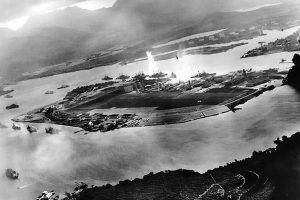
 There are some national events that stay in our thoughts and hearts forever. The Pearl Harbor is one of those events. The attack on Pearl Harbor was so destructive and so unexpected that it shocked everyone…well, most everyone anyway. President Franklin D Roosevelt knew that Japan would likely attack, but thought it would be in the western Pacific Ocean, especially the Philippians. Pearl Harbor was considered an unlikely target. Roosevelt wanted to enter the war, but he wanted to attack Germany, whom he considered to be the bigger threat. In fact, he had ordered the attack on any U-Boats found in the west side of the Atlantic. So, technically the US was already in the war…most people just didn’t know that. Still, the attack on Pearl Harbor was horrific and the United States had to retaliate.
There are some national events that stay in our thoughts and hearts forever. The Pearl Harbor is one of those events. The attack on Pearl Harbor was so destructive and so unexpected that it shocked everyone…well, most everyone anyway. President Franklin D Roosevelt knew that Japan would likely attack, but thought it would be in the western Pacific Ocean, especially the Philippians. Pearl Harbor was considered an unlikely target. Roosevelt wanted to enter the war, but he wanted to attack Germany, whom he considered to be the bigger threat. In fact, he had ordered the attack on any U-Boats found in the west side of the Atlantic. So, technically the US was already in the war…most people just didn’t know that. Still, the attack on Pearl Harbor was horrific and the United States had to retaliate.
The attack on Pearl Harbor took so many people by surprise. It was a Sunday morning, and many of the military personnel were off base attending church services. The Japanese knew that the ships, planes, and the base in general would be seriously understaffed at the time of the attack. Of course, on the flip side, the fact that so many of the military personnel were away from the base at the time of the attack, meant that the base was able to get back up and running quickly and when we did enter the war, the Japanese were surprised about the attacks coming back at them. Of course, as we all know, the Allies went on to win the war against the Axis nation, including Germany and Japan. It’s been said that people shouldn’t wake the sleeping giant, and that is a wise statement. The Japanese awakened the United States to the fact that appeasing your enemies will not prevent an attack. It takes a show of military might to inform our enemies that it is wise to back away and let the sleeping giants lie.
Of course, the victory that was won following the attack of Pearl Harbor and the US entrance into World War II, came at a high price. A total of 2,403 people (both civilians and soldiers), not to mention ships, airplanes, and 
 other military equipment. After the attack, the people of the United States were…angry!! We quickly geared up and the war was on for the United States. Our delay could never bring back the people we lost, but we would certainly avenge their loss. Today we remember those we lost, and those who went out to take up the fight to protect our country from such a horrendous attack.
other military equipment. After the attack, the people of the United States were…angry!! We quickly geared up and the war was on for the United States. Our delay could never bring back the people we lost, but we would certainly avenge their loss. Today we remember those we lost, and those who went out to take up the fight to protect our country from such a horrendous attack.

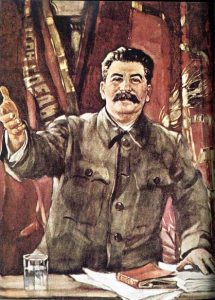 Generally speaking, a man’s word is his bond…as the saying goes, but when a man’s word can’t be trusted, well promises mean nothing, agreements mean nothing, partnership means nothing. The people who took Adolf Hitler at his word, found out the hard way, that Hitler was definitely not a man of his word. On June 22, 1941, after making an agreement, known as the Nazi-Soviet Pact of 1939, Nazi Germany at Hitler’s command, launched a massive invasion against the USSR. The agreement was basically that Germany and the USSR would not attack each other. Less than two years into the agreement, Hitler broke the agreement. He was most likely planning that invasion all along, but he needed to have the people of the USSR unaware of his plans. He needed to have them trust him, so his invasion would be a complete surprise attack.
Generally speaking, a man’s word is his bond…as the saying goes, but when a man’s word can’t be trusted, well promises mean nothing, agreements mean nothing, partnership means nothing. The people who took Adolf Hitler at his word, found out the hard way, that Hitler was definitely not a man of his word. On June 22, 1941, after making an agreement, known as the Nazi-Soviet Pact of 1939, Nazi Germany at Hitler’s command, launched a massive invasion against the USSR. The agreement was basically that Germany and the USSR would not attack each other. Less than two years into the agreement, Hitler broke the agreement. He was most likely planning that invasion all along, but he needed to have the people of the USSR unaware of his plans. He needed to have them trust him, so his invasion would be a complete surprise attack.
When he was ready, and aided by his far superior air force, Hitler sent his German army racing across the Russian plains. The German Army was given carte blanche in the invasion, and so they went about inflicting terrible casualties on the Red Army and the Soviet civilians. Of course, the German Army wasn’t alone in their attack. Their first targets of attack were Leningrad and Moscow. With the assistance of troops from their Axis allies, the Germans conquered the vast territory, and by mid-October the great Russian cities of Leningrad and Moscow were under siege. The Soviets held on, and the coming winter forced the German offensive to pause.
Hitler set his sights on the summer of 1942, and ordered the Sixth Army, under General Friedrich Paulus, to take Stalingrad in the south. Stalingrad was an industrial center and therefore, an obstacle to Nazi control of the precious Caucasus oil wells. The oil wells were a crucial part of the control process. The Army made advances across the Volga River in August, while the German Fourth Air Fleet reduced Stalingrad to burning rubble, killing more than 40,000 civilians. With the first attack behind them, Paulus ordered the first offensives into Stalingrad in September, estimating that it would take his army about 10 days to capture the city.
The ensuing battle was one of the most horrific battles of World War II. It was also quite likely the most important because it was the turning point in the war between Germany and the USSR. The USSR’s Red Army was furious and had an ax to grind over the ruined city and their lost loved ones and friends. Now, the German Sixth Army faced General Vasily Chuikov leading a bitter Red Army seeking revenge. They quickly transformed destroyed buildings and rubble into natural counter offensive fortifications. Then, using a method of fighting known as the Rattenkrieg or “Rat’s War,” the opposing forces broke into squads eight or 10 strong and fought each other for every house and yard of territory. The battle saw rapid advances in street-fighting technology. Things like a German machine gun that shot around corners and a light Russian plane that glided silently over German positions at night, dropping bombs without warning were birthed during this battle. The biggest problem the armies faced, however, was a lack of necessary food, water, or medical supplies, causing tens of thousands of soldiers to die every week.
The biggest miscalculation Hitler made was the resolve of Soviet leader Joseph Stalin, who was determined to liberate the city named after him. In November he ordered massive reinforcements to the area. On November 19, General Zhukov launched a great Soviet counteroffensive. German command underestimated the scale of the counterattack, and the Sixth Army was quickly overwhelmed by the offensive, which involved 500,000 Soviet troops, 900 tanks, and 1,400 aircraft. Within three days, the entire German force of more than 200,000 men was encircled. Before long, the Italian and Romanian troops at Stalingrad surrendered. That didn’t follow for the Germans, who hung on. Of course, Hitler would not let them surrender, so they waited…receiving limited supplies by air and waiting for reinforcements. Hitler ordered Paulus to remain in place and promoted him to field marshal, because no Nazi field marshal had ever surrendered.
The Germans lost as many lives to starvation and the bitter Russian winter, as they did to the merciless Soviet troops. Their supply line was completely cut off on January 21, 1943, when the last of the airports held by the Germans fell to the Soviets…completely cutting off their supplies. Despite Hitler’s threats, Paulus surrendered German forces in the southern sector on January 31, and on February 2 the remaining German troops surrendered. By the time Paulus surrendered, there were only 90,000 German soldiers still alive. They may 
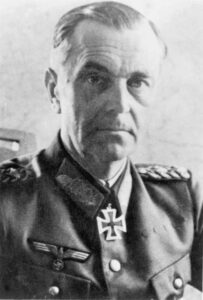 have thought they were among the lucky ones, but of the 90,000, only 5,000 survived the Soviet prisoner-of-war camps and make it back to Germany.
have thought they were among the lucky ones, but of the 90,000, only 5,000 survived the Soviet prisoner-of-war camps and make it back to Germany.
The Battle of Stalingrad was the turning point in the war between Germany and the Soviet Union. Chuikov had played such an important role in the victory. Later, it was he who led the Soviet drive on Berlin. As a reward, on May 1, 1945, he was given the right to personally accept the German surrender of Berlin. Paulus, who felt betrayed by Hitler, was among the German prisoners of war in the Soviet Union. He provided testimony at the International Military Tribunal at Nuremberg in 1946. After his release by the Soviets in 1953, he settled in East Germany.
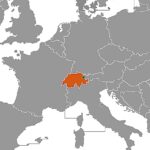 There are all kinds of records, but some are just stranger than others. Switzerland actually holds a strange record…for attacking its neighbor, Liechtenstein. This is particularly odd in that Switzerland is a neutral nation…very opposed to war!! In fact, Switzerland is the longest standing neutral nation in the world and has not taken part in a “war” since 1505. Its official stance of non-involvement had been decided during The Congress of Vienna in 1815, in which major European leaders met to discuss the nature of Europe after the defeat of Napoleon. Nevertheless, they do have an army.
There are all kinds of records, but some are just stranger than others. Switzerland actually holds a strange record…for attacking its neighbor, Liechtenstein. This is particularly odd in that Switzerland is a neutral nation…very opposed to war!! In fact, Switzerland is the longest standing neutral nation in the world and has not taken part in a “war” since 1505. Its official stance of non-involvement had been decided during The Congress of Vienna in 1815, in which major European leaders met to discuss the nature of Europe after the defeat of Napoleon. Nevertheless, they do have an army.
Diplomatic and economic relations between Switzerland and Liechtenstein have been good. In fact, you could say relations were very good, with Switzerland accepting the role of safeguarding the interests of its tiny next-door neighbor. Liechtenstein has an embassy in Bern, Switzerland, and Switzerland is accredited to Liechtenstein from its Federal Department of Foreign Affairs in Bern and maintains an honorary consulate in Vaduz, Liechtenstein. The two countries also share an open border, mostly along the Rhine, but also in the Rätikon range of the Alps, between the Fläscherberg and the Naafkopf.
With all that “good will” between the nations, you would never expect conflict, but apparently, Switzerland has 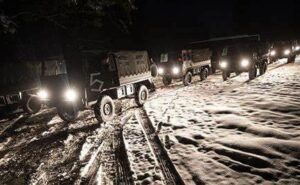 attacked Liechtenstein three times in 30 years. Of course, it was by mistake each time! How does that happen? Nevertheless, it did. The first time was probably the only “aggressive” accident of the bunch. On December 5, 1985, during an artillery exercise, the Swiss Army had launched munitions in the middle a winter storm. The wind took the munitions way off course, into the Bannwald Forest of Liechtenstein, and started a forest fire. No one was injured and the Liechtenstein government was very angry. Switzerland had to pay a heavy penalty for the environmental damage caused. The second attack took place on October 13, 1992. The Swiss Army received orders to set up an observation post in Treisenberg. They followed the orders and marched to Treisenberg. What they didn’t realize was that Treisenberg lies within the territory of Liechtenstein. They marched into Treisenberg with rifles and only later realized that they were in Liechtenstein. The last attack was on March 1, 2007. A group of Swiss Army infantry soldiers was in training when the weather took a bad turn. There was heavy rainfall, and the soldiers were not carrying any GPS or compass. Eventually, they ended up in Liechtenstein! Switzerland apologized to the Liechtenstein government for the intrusion, yet again.
attacked Liechtenstein three times in 30 years. Of course, it was by mistake each time! How does that happen? Nevertheless, it did. The first time was probably the only “aggressive” accident of the bunch. On December 5, 1985, during an artillery exercise, the Swiss Army had launched munitions in the middle a winter storm. The wind took the munitions way off course, into the Bannwald Forest of Liechtenstein, and started a forest fire. No one was injured and the Liechtenstein government was very angry. Switzerland had to pay a heavy penalty for the environmental damage caused. The second attack took place on October 13, 1992. The Swiss Army received orders to set up an observation post in Treisenberg. They followed the orders and marched to Treisenberg. What they didn’t realize was that Treisenberg lies within the territory of Liechtenstein. They marched into Treisenberg with rifles and only later realized that they were in Liechtenstein. The last attack was on March 1, 2007. A group of Swiss Army infantry soldiers was in training when the weather took a bad turn. There was heavy rainfall, and the soldiers were not carrying any GPS or compass. Eventually, they ended up in Liechtenstein! Switzerland apologized to the Liechtenstein government for the intrusion, yet again.
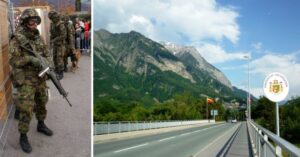
Thankfully these “accidental” attacks were not of a deadly nature. They were really more a “comedy of errors” than an attack. Thankfully, the people of Liechtenstein saw the “attacks” for what they were, and tended to care for their “intruders,” rather than fight back. Of course, that would have been difficult too, since Liechtenstein does not have an army of their own, and so depended on the “protection” of their neighbors…when they didn’t accidentally attack them.
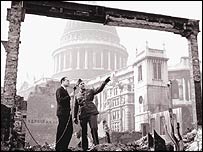 In March or 1941, the United States was largely considered neutral, so we could provide the countries, who were fighting Adolf Hitler, with war material. It was during this period of time, that the United Kingdom, an old enemy of the United States, since the United States fought against them for our independence, needed our help. Of course, we were allies by that time, and so the thought of a loan to the UK was not out o the question. The UK had been fighting against Adolf Hitler’s Germany army for a while by then, and funds were dwindling. The US loaned $4.33 billion to Britain in 1945, while Canada loaned US$1.19 billion in 1946, at a rate of 2% annual interest. It was a good deal, but in the end, the amount paid back was nearly double the amounts loaned in 1945 and 1946.
In March or 1941, the United States was largely considered neutral, so we could provide the countries, who were fighting Adolf Hitler, with war material. It was during this period of time, that the United Kingdom, an old enemy of the United States, since the United States fought against them for our independence, needed our help. Of course, we were allies by that time, and so the thought of a loan to the UK was not out o the question. The UK had been fighting against Adolf Hitler’s Germany army for a while by then, and funds were dwindling. The US loaned $4.33 billion to Britain in 1945, while Canada loaned US$1.19 billion in 1946, at a rate of 2% annual interest. It was a good deal, but in the end, the amount paid back was nearly double the amounts loaned in 1945 and 1946.
The United States was pulled into World War II shortly after, when Japan attacked Pearl Harbor. That marked to end of the program to provide military materials, because the United States was no longer considered neutral. At this point, the United States was very much needed in a very different way, and could not be neutral and be an effective help, but they also had a score to settle, and it could not be handled on the sidelines. The United States had hoped to sit this one out, but that was not to be. The Axis of Evil was winning against the Allied Nations, and they needed help, but it was the boldness of the attack on Pearl Harbor that finally awoke the sleeping giant that was the United States. The United States victory over Japan in the Battle of Midway was the turning point of the war in the Pacific. Then Germany invaded the Soviet Union. The Soviet Union defeated Germany at Stalingrad, marking the turning point of the war in Eastern Europe. As we all know, in the end the Allies were victorious in World War II.
There are still World War I debts owed to and by Britain. Since a moratorium on all debts from that conflict was agreed at the height of the Great Depression, no repayments have been made to or received from other nations since 1934. Despite the favorable rates there were six years in which Britain deferred payment because of economic or political crises. Britain settled its World War II debts to the United States and Canada when it paid the final 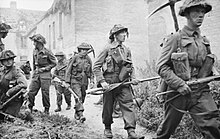 two installments in 2006. The payments of $83.25 million to the US and US$22.7 million to Canada are the last of 50 installments since 1950. Upon the final payments, the UK will have paid back a total of $7.5 billion to the US and US$2 billion to Canada. “This week we finally honor in full our commitments to the United States and Canada for the support they gave us 60 years ago,” said Treasury Minister Ed Balls at the time of those final payments. “It was vital support which helped Britain defeat Nazi Germany and secure peace and prosperity in the post-war period. We honor our commitments to them now as they honored their commitments to us all those years ago,” he added.
two installments in 2006. The payments of $83.25 million to the US and US$22.7 million to Canada are the last of 50 installments since 1950. Upon the final payments, the UK will have paid back a total of $7.5 billion to the US and US$2 billion to Canada. “This week we finally honor in full our commitments to the United States and Canada for the support they gave us 60 years ago,” said Treasury Minister Ed Balls at the time of those final payments. “It was vital support which helped Britain defeat Nazi Germany and secure peace and prosperity in the post-war period. We honor our commitments to them now as they honored their commitments to us all those years ago,” he added.
 When we think of the attack on Pearl Harbor, we mostly think of the events that took place at Pearl Harbor, but that attack was felt far and wide. I’m sure there are many stories, But this one struck me as particularly poignant. The Japanese bombing of the US naval base in Pearl Harbor 75 years ago sent a seismic shock around the world. Nicholas Best charts how stunned onlookers across the planet…from Dirk Bogarde to Adolf Hitler to Mao Zedong…reacted to the news. Their reactions might have been interesting, but I was moved by the thoughts and reactions of Joan Fawcett, who was simply a passenger on the Dutch ship Jägersfontein. Joan was just 21 years old that December 7th, and she was traveling to India from San Francisco. After several days at sea, she was looking forward to arriving in Honolulu soon after breakfast. Joan didn’t want to miss a moment as the ship approached the Hawaiian island of Oahu from the south.
When we think of the attack on Pearl Harbor, we mostly think of the events that took place at Pearl Harbor, but that attack was felt far and wide. I’m sure there are many stories, But this one struck me as particularly poignant. The Japanese bombing of the US naval base in Pearl Harbor 75 years ago sent a seismic shock around the world. Nicholas Best charts how stunned onlookers across the planet…from Dirk Bogarde to Adolf Hitler to Mao Zedong…reacted to the news. Their reactions might have been interesting, but I was moved by the thoughts and reactions of Joan Fawcett, who was simply a passenger on the Dutch ship Jägersfontein. Joan was just 21 years old that December 7th, and she was traveling to India from San Francisco. After several days at sea, she was looking forward to arriving in Honolulu soon after breakfast. Joan didn’t want to miss a moment as the ship approached the Hawaiian island of Oahu from the south.
Many other passengers were up early too. They were all enjoying the view of Diamond Head as they prepared to enter harbor. To add to the fun, the US navy was carrying out some sort of naval exercise ahead of them. As Joan later recalled: “I noticed a few puffs of grey smoke in the sky, just over the harbor, and as they seemed  strange clouds I asked the boys what explanation they could give and we decided that they were the puffs from anti-aircraft fire. By this time there were many grey spots and soon we could hear the report of the guns. We thought it was just a practice maneuver and a welcome salute for us. By nine o’clock we had had breakfast and were all up on deck watching the planes fly over. We did see things drop into the water, and one only 50 yards away, but thought nothing more of it. Later we heard eight bombs were aimed at our ship. We made a beautiful target for we were entering the harbor, and being in the mined area could not swerve left or right in the cleared channel. We were thoroughly enjoying the display.” The ship’s agent hurried aboard as soon as they docked. He told the passengers it was no exercise. The US Navy’s Pacific fleet up the coast at Pearl Harbor was being attacked by the Japanese. Within hours, news of the outrage was racing around the world, leaving people shocked, dismayed…and, in some cases, delighted…in its wake.
strange clouds I asked the boys what explanation they could give and we decided that they were the puffs from anti-aircraft fire. By this time there were many grey spots and soon we could hear the report of the guns. We thought it was just a practice maneuver and a welcome salute for us. By nine o’clock we had had breakfast and were all up on deck watching the planes fly over. We did see things drop into the water, and one only 50 yards away, but thought nothing more of it. Later we heard eight bombs were aimed at our ship. We made a beautiful target for we were entering the harbor, and being in the mined area could not swerve left or right in the cleared channel. We were thoroughly enjoying the display.” The ship’s agent hurried aboard as soon as they docked. He told the passengers it was no exercise. The US Navy’s Pacific fleet up the coast at Pearl Harbor was being attacked by the Japanese. Within hours, news of the outrage was racing around the world, leaving people shocked, dismayed…and, in some cases, delighted…in its wake.
Thinking about Joan Fawcett, I have wondered how she must have felt when she found out that they were  sailing right into a battle. She may not have known it at all until the agent rushed onboard to try to pull people to safety. Imagining the awe of the beautiful harbor, and then having the images dissolving into horror, fear, and death. Now she finds herself running for her life alongside all the other passengers, praying that they can get to safety before one of those bombs hits them. There is no place that is safe to go. It was chaos…everywhere. She and the rest of the passengers are caught in the middle of their worst nightmare, and they can never get those pictures out of their heads. Most of the people alive then, and anyone who has ever studied the attack, could never get that picture out of their head.
sailing right into a battle. She may not have known it at all until the agent rushed onboard to try to pull people to safety. Imagining the awe of the beautiful harbor, and then having the images dissolving into horror, fear, and death. Now she finds herself running for her life alongside all the other passengers, praying that they can get to safety before one of those bombs hits them. There is no place that is safe to go. It was chaos…everywhere. She and the rest of the passengers are caught in the middle of their worst nightmare, and they can never get those pictures out of their heads. Most of the people alive then, and anyone who has ever studied the attack, could never get that picture out of their head.
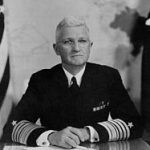
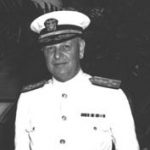 November 25, 1941, while not the date that would live in infamy, is a date that, in some ways, lives in infamy too. It was on this day that Admiral Harold R. Stark, United States Chief of Naval Operations, told Admiral Husband E. Kimmell, commander of the United States Pacific Fleet at Pearl Harbor, that both President Roosevelt and Secretary of State Cordell Hull thought that a Japanese surprise attack is a distinct possibility. It was their thought that the attack might possibly happen on the following Monday, because the Japanese were notorious for attacking without warning, President Franklin D. Roosevelt had informed his Cabinet. “We must all prepare for trouble, possibly soon,” he telegraphed British Prime Minister Winston Churchill.
November 25, 1941, while not the date that would live in infamy, is a date that, in some ways, lives in infamy too. It was on this day that Admiral Harold R. Stark, United States Chief of Naval Operations, told Admiral Husband E. Kimmell, commander of the United States Pacific Fleet at Pearl Harbor, that both President Roosevelt and Secretary of State Cordell Hull thought that a Japanese surprise attack is a distinct possibility. It was their thought that the attack might possibly happen on the following Monday, because the Japanese were notorious for attacking without warning, President Franklin D. Roosevelt had informed his Cabinet. “We must all prepare for trouble, possibly soon,” he telegraphed British Prime Minister Winston Churchill.
Kimmel’s command was at the mid-Pacific base at Oahu, which included, Pearl Harbor. At the time he received the “warning” from Stark, he was negotiating with Army Lieutenant General Walter C. Short, commander of all United States forces at Pearl Harbor, about sending United States warships out from Pearl Harbor in order to reinforce Wake and Midway Islands, along with the Philippines, which were considered possible Japanese targets. But the Army had no anti aircraft artillery to spare. War worries struck due to an intercepted Japanese diplomatic message, which gave November 25 as a deadline of sorts. If Japanese diplomacy had failed to convince the Americans to revoke the economic sanctions against Japan, “things will automatically begin to happen,” the message related. Those “things” were becoming obvious, in the form of Japanese troop movements off Formosa (Taiwan), toward Malaya. In reality, they were headed for Pearl Harbor, as was the Japanese First Air Fleet, but no one had guessed that was the intended target.
Despite the fact that so many in positions of command anticipated a Japanese attack, they had all failed to figure out that Hawaii was the target. When the attack came, they were all taken by complete and deadly surprise. Maybe they should have known, especially given the failure of diplomacy, when Japan refused United States demands to withdraw from both the Axis pact and occupied territories in China and Indochina, but no 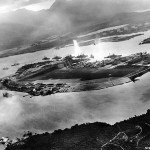
 one guessed Pearl Harbor was the target. Unfortunately they assumed Midway or Wake islands, because they seemed to be more strategic targets, and they expected that Japan would need those locations to have a chance at victory. I don’t know why the Japanese decided on Pearl Harbor, but perhaps it was a way of attacking in the heart of the United States…or as much as they felt they could. Whatever the case may be, the United States came back with a vengeance, and the Japanese would regret their attack on Pearl Harbor, because they would lose the war, date that would live in infamy…or not.
one guessed Pearl Harbor was the target. Unfortunately they assumed Midway or Wake islands, because they seemed to be more strategic targets, and they expected that Japan would need those locations to have a chance at victory. I don’t know why the Japanese decided on Pearl Harbor, but perhaps it was a way of attacking in the heart of the United States…or as much as they felt they could. Whatever the case may be, the United States came back with a vengeance, and the Japanese would regret their attack on Pearl Harbor, because they would lose the war, date that would live in infamy…or not.
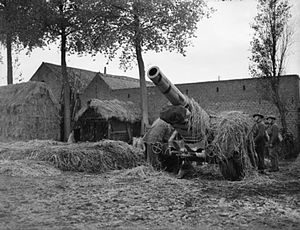 A declaration of war usually means that the people in both areas within the dispute had better prepare for eminent attack, because the declaration of war is like firing the warning shot before the actual open-fire begins. Of course, it may not be an immediate attack, but the attack always comes…or does it. On September 3, 1939, the United Kingdom and France declared war on Nazi Germany, after the Germans invaded Poland. Over the next eight months, at the start of World War II, there were no major military land operations on the Western Front. Strange, considering that the United Kingdom and France had declared war on Nazi Germany. You would think that they would attack or something, but nothing happened. During those eight months, Poland was overrun. It took about five weeks for the German Invasion of Poland beginning September 1, 1939 and the Soviet invasion beginning on 17 September 1939. Still, the Western Allies did nothing. I guess I don’t understand that. War had been declared by each side, but no Western power would
A declaration of war usually means that the people in both areas within the dispute had better prepare for eminent attack, because the declaration of war is like firing the warning shot before the actual open-fire begins. Of course, it may not be an immediate attack, but the attack always comes…or does it. On September 3, 1939, the United Kingdom and France declared war on Nazi Germany, after the Germans invaded Poland. Over the next eight months, at the start of World War II, there were no major military land operations on the Western Front. Strange, considering that the United Kingdom and France had declared war on Nazi Germany. You would think that they would attack or something, but nothing happened. During those eight months, Poland was overrun. It took about five weeks for the German Invasion of Poland beginning September 1, 1939 and the Soviet invasion beginning on 17 September 1939. Still, the Western Allies did nothing. I guess I don’t understand that. War had been declared by each side, but no Western power would 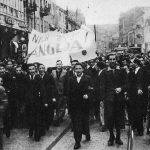 launch a significant land offensive…even though the terms of the Anglo-Polish and Franco-Polish military alliances obligated the United Kingdom and France to assist Poland. They simply stood by and let it happen.
launch a significant land offensive…even though the terms of the Anglo-Polish and Franco-Polish military alliances obligated the United Kingdom and France to assist Poland. They simply stood by and let it happen.
The quiet of the so-named Phoney War was marked by a few Allied actions. During the Saar Offensive in September, France attacked Germany with the intention of assisting Poland, but the attack fizzled out within days and the French withdrew. In November, the Soviets attacked Finland in the Winter War. This resulted in much debate in France and Britain about helping Finland, but this campaign was delayed until the Winter War ended in March. The Allied discussions about a Scandinavian campaign caused concern in Germany and resulted in the German invasion of Denmark and Norway in April. Then the Allied troops that were previously assembled for Finland were redirected to Norway instead. Fighting there continued until June when the Allies evacuated, ceding Norway to Germany in response to the German invasion of France, which had taken place on May 10, 1940.
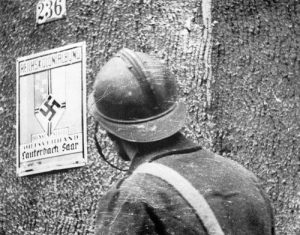
The Germans launched attacks at sea during the autumn and winter of 1939, against British aircraft carriers and destroyers, sinking several including the carrier HMS Courageous with the loss of 519 lives. Action in the air began on October 16, 1939 when the Luftwaffe launched air raids on British warships. There were various minor bombing raids and reconnaissance flights on both sides, but nothing that could possibly be viewed as a clear offensive….and during that whole time, people were dying and being subjected to various atrocities, because no one would help. Yes, war was declared, but it was a phony war, and apparently a phony declaration.

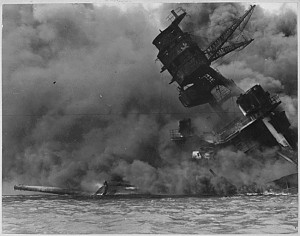 Whether people remember the date or not, I think that most people know that the attack on Pearl Harbor was what took the United States into World War II. Negotiations with Japan had broken down, and President Franklin Roosevelt and his advisors knew that in all probability, the Japanese would attack the United States. Still, nothing was done to increase security at key points, like the naval base at Pearl Harbor, Hawaii. This was especially an important base, because of it’s location. It was a place that early warning could have been given to the mainland, or where an attack could have been thwarted, but as often happens in government, the leaders don’t want to scare the nation, so they try to keep things from them…a plan the is fraught with folly. The best weapon a nation can possibly have is preparedness.
Whether people remember the date or not, I think that most people know that the attack on Pearl Harbor was what took the United States into World War II. Negotiations with Japan had broken down, and President Franklin Roosevelt and his advisors knew that in all probability, the Japanese would attack the United States. Still, nothing was done to increase security at key points, like the naval base at Pearl Harbor, Hawaii. This was especially an important base, because of it’s location. It was a place that early warning could have been given to the mainland, or where an attack could have been thwarted, but as often happens in government, the leaders don’t want to scare the nation, so they try to keep things from them…a plan the is fraught with folly. The best weapon a nation can possibly have is preparedness.
December 7, 1941 was a beautiful Sunday in Hawaii, 75 years ago today, and many military personnel had been given passes to attend church services off base. At 7:02am, two radar operators spotted large groups of aircraft in flight toward the island from the north, but with a flight of B-17s expected from the United States at the time, they were told not to sound an alarm. At 7:55am Hawaii time, a Japanese dive bomber bearing the red symbol of the Rising Sun of Japan on its wings appeared out of the clouds above the island of Oahu. Behind it came a swarm of 360 Japanese warplanes, descending on the US naval base at Pearl Harbor in a ferocious attack. The United States was unprepared, and the surprise attack struck a critical blow against the US Pacific fleet drawing the United States irrevocably into World War II.
In an attack that lasted just under two hours, the Japanese rendered much of the Pacific fleet useless, including five of eight battleships, three destroyers, and seven other ships that were sunk or severely damaged, and more than 200 aircraft that were destroyed. A total of 2,400 Americans were killed and 1,200 were wounded, many while scrambling in a valiant attempt to repulse the attack. Japan’s losses were some 30 planes, five midget submarines, and fewer than 100 men. Fortunately for the United States, all three Pacific fleet carriers were out at sea on training maneuvers. These giant aircraft carriers would exact their revenge against Japan six months later at the Battle of Midway, reversing the tide against the previously invincible Japanese navy in a spectacular victory…a beating that Japan would not forget.
The day after Pearl Harbor was bombed, President Roosevelt appeared before a joint session of Congress and declared, “Yesterday, December 7, 1941…a date which will live in infamy…the United States of America was suddenly and deliberately attacked by naval and air forces of the Empire of Japan.” After a brief and forceful speech, he asked Congress to approve a resolution recognizing the state of war between the United States and Japan. The Senate voted for war against Japan by 82 to 0, and the House of Representatives approved the resolution by a vote of 388 to 1. The sole dissenter was Representative Jeannette Rankin of Montana, a devout pacifist, who had also cast a dissenting vote against the United States entrance into World War I. Three days later, Germany and Italy declared war against the United States, and the United States government responded in kind. The American contribution to the successful Allied war effort spanned four long years and cost more than 400,000 American lives.
I have never personally been to Pearl Harbor, but I am told that the Arizona Memorial, that stands above the sunken ship, that is grave to the brave men who died inside, displays a feeling of sadness, and of being on 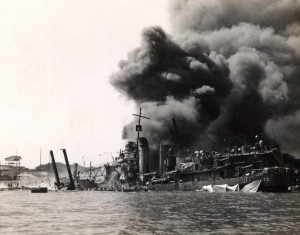
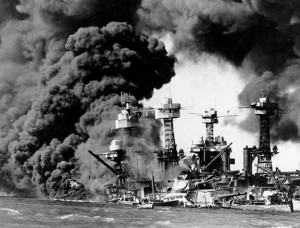 hallowed ground. It is a feeling I felt when I walked through the cemetery at Gettysburg. The men who died there…who bravely gave the ultimate sacrifice deserve the respect of those who would come to visit. I do not believe in ghosts, but I do believe that God gives cemeteries, in general, and military cemeteries especially an air of quiet honor reserved for the dead. Let us never forget that our greatest weapon in all areas of life is preparedness.
hallowed ground. It is a feeling I felt when I walked through the cemetery at Gettysburg. The men who died there…who bravely gave the ultimate sacrifice deserve the respect of those who would come to visit. I do not believe in ghosts, but I do believe that God gives cemeteries, in general, and military cemeteries especially an air of quiet honor reserved for the dead. Let us never forget that our greatest weapon in all areas of life is preparedness.
 Underestimating…it can be inconvenient, sad, or devastating…but, it’s always a mistake. On September 24, 1941, the United States was right in the middle of underestimating Japan. Relations between the United States and Japan were deteriorating. Japan had occupied Indo-China and was now implicitly menacing the Philippines, a country the United States was protecting. The American reaction was to seize all Japanese assets in the United States and closed the Panama Canal to any Japanese shipping. Then in September of 1941, Roosevelt issued a statement, which had been drafted by British Prime Minister Winston Churchill, that threatened war between the United States and Japan should the Japanese make any further movement in territories in Southeast Asia or the South Pacific.
Underestimating…it can be inconvenient, sad, or devastating…but, it’s always a mistake. On September 24, 1941, the United States was right in the middle of underestimating Japan. Relations between the United States and Japan were deteriorating. Japan had occupied Indo-China and was now implicitly menacing the Philippines, a country the United States was protecting. The American reaction was to seize all Japanese assets in the United States and closed the Panama Canal to any Japanese shipping. Then in September of 1941, Roosevelt issued a statement, which had been drafted by British Prime Minister Winston Churchill, that threatened war between the United States and Japan should the Japanese make any further movement in territories in Southeast Asia or the South Pacific.
The Japanese had dominated Japanese foreign affairs for a long time…probably the biggest problem. The US Secretary of State, and Japan’s counterpart were trying to  ease tensions between the two countries, but Hideki Tojo, the minister of war, later to become the prime minister, had not intentions of leaving the territories Japan had captured. He viewed the Americans as a “threat” to his plan, and considered their attempts an ultimatum. So began his plans to strike the first blow in a Japanese-American confrontation…the bombing of Pearl Harbor.
ease tensions between the two countries, but Hideki Tojo, the minister of war, later to become the prime minister, had not intentions of leaving the territories Japan had captured. He viewed the Americans as a “threat” to his plan, and considered their attempts an ultimatum. So began his plans to strike the first blow in a Japanese-American confrontation…the bombing of Pearl Harbor.
On this day, September 24, 1941, Japanese consul in Hawaii, Nagai Kita was instructed to divide Pearl Harbor into five zones. He was also told to determine the number of warships moored in each zone and report back to Japan. The Japanese did not know that the Americans had intercepted the message. The problem was that it had to be sent back to Washington DC for decrypting. At that time in history, flights from  Hawaii to the mainland were infrequent. Remember that we didn’t have jumbo jets then. Most people traveled by ship, and so did the mail. The coded message was sent by sea, and finally reached the capital, but with staffing shortages, the decrypting was delayed until mid-October. It looked like a discarded plan the Japanese had, and since nothing had happened at Pearl Harbor, apparently the Japanese must have determined that it would not work. It was presumed to be an old message that held no possible importance after so long a time had passed. On December 7, 1941, the Americans would realize just how wrong they had been. With the bombing of Pearl Harbor, the importance of the message and the plan would be revealed.
Hawaii to the mainland were infrequent. Remember that we didn’t have jumbo jets then. Most people traveled by ship, and so did the mail. The coded message was sent by sea, and finally reached the capital, but with staffing shortages, the decrypting was delayed until mid-October. It looked like a discarded plan the Japanese had, and since nothing had happened at Pearl Harbor, apparently the Japanese must have determined that it would not work. It was presumed to be an old message that held no possible importance after so long a time had passed. On December 7, 1941, the Americans would realize just how wrong they had been. With the bombing of Pearl Harbor, the importance of the message and the plan would be revealed.
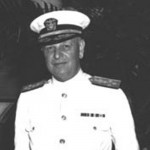 It seems that whenever something goes wrong in our world, someone must be to blame, and I believe that is often the case. The problem with playing The Blame Game, is that all too often, the person where the real blame should go is not the one who ends up taking the fall. Scapegoats have been around since Bible times, when the sins of the people were placed on a goat and it was sent into the windernesss. That isn’t the type of scapegoat that we see today, however.
It seems that whenever something goes wrong in our world, someone must be to blame, and I believe that is often the case. The problem with playing The Blame Game, is that all too often, the person where the real blame should go is not the one who ends up taking the fall. Scapegoats have been around since Bible times, when the sins of the people were placed on a goat and it was sent into the windernesss. That isn’t the type of scapegoat that we see today, however.
Don’t get me wrong, we all play The Blame Game, but politicians seem to be particularly adept at it. A good example is the forced retirement of Rear Admiral Husband E Kimmel, who was relieved of his command of the United States Pacific Fleet on December 17, 1941, just ten days after the Japanese attack on Pearl Harbor. I don’t say that he bore no blame at all, but in reality, he had no more reason to think that an attack on Pearl Harbor was imminent, than anyone else had. And in reality, the blame needed to fall on our President at the time, Franklin Delano Roosevelt, because he was soft on the Japanese, and basically asked us to trust them, when they were not at all  trustworthy. President Roosevelt’s actions…or lack thereof, left us sitting ducks when the Japanese made their move.
trustworthy. President Roosevelt’s actions…or lack thereof, left us sitting ducks when the Japanese made their move.
Basically, Rear Admiral Kimmel was chosen to take the blame because of his lack of imagination…or so it was said. Kimmel was a creature of habit, and he had expected an attack on Midway Island or Wake Island, and even went so far as to request extra antiaircraft artillery be sent there. None could be spared, and so was not sent. It never occurred to him that the Japanese might attack Pearl Harbor, and therefore he took no special action there. Unfortunately, Kimmel was an easy read by the Japanese, and when he chose not to protect Pearl Harbor, that was where the Japanese made their attack. But, as I said, he had no more reason to expect an attack at Pearl Harbor than anyone else had, and for that reason he should not have born the brunt of the blame.
Kimmel could have faced court martial…a second and even more severe injustice…but in the end, when he requested early retirement, his request was granted. The American people were outraged at this breach in  security, so someone had to take the blame. I really find that to be an unfair way to handle this situation, but it was how it was done anyway. When Admiral Kimmel’s Story, which was an “as told to” autobiography, was published in 1955, the admiral made it clear that he believed President Roosevelt sacrificed him, and his career, to take suspicion off himself. Although there was no evidence to prove it, Kimmel believed Roosevelt knew Pearl Harbor was going to be bombed. I’m not sure Roosevelt could have known that either, but I think he was just as much or more to blame than Kimmel was. There always seems to be enough blame to go around, but in reality, trusting our enemies will always bring bad results. We need to be watchful and strong in military might to keep this nation safe.
security, so someone had to take the blame. I really find that to be an unfair way to handle this situation, but it was how it was done anyway. When Admiral Kimmel’s Story, which was an “as told to” autobiography, was published in 1955, the admiral made it clear that he believed President Roosevelt sacrificed him, and his career, to take suspicion off himself. Although there was no evidence to prove it, Kimmel believed Roosevelt knew Pearl Harbor was going to be bombed. I’m not sure Roosevelt could have known that either, but I think he was just as much or more to blame than Kimmel was. There always seems to be enough blame to go around, but in reality, trusting our enemies will always bring bad results. We need to be watchful and strong in military might to keep this nation safe.

